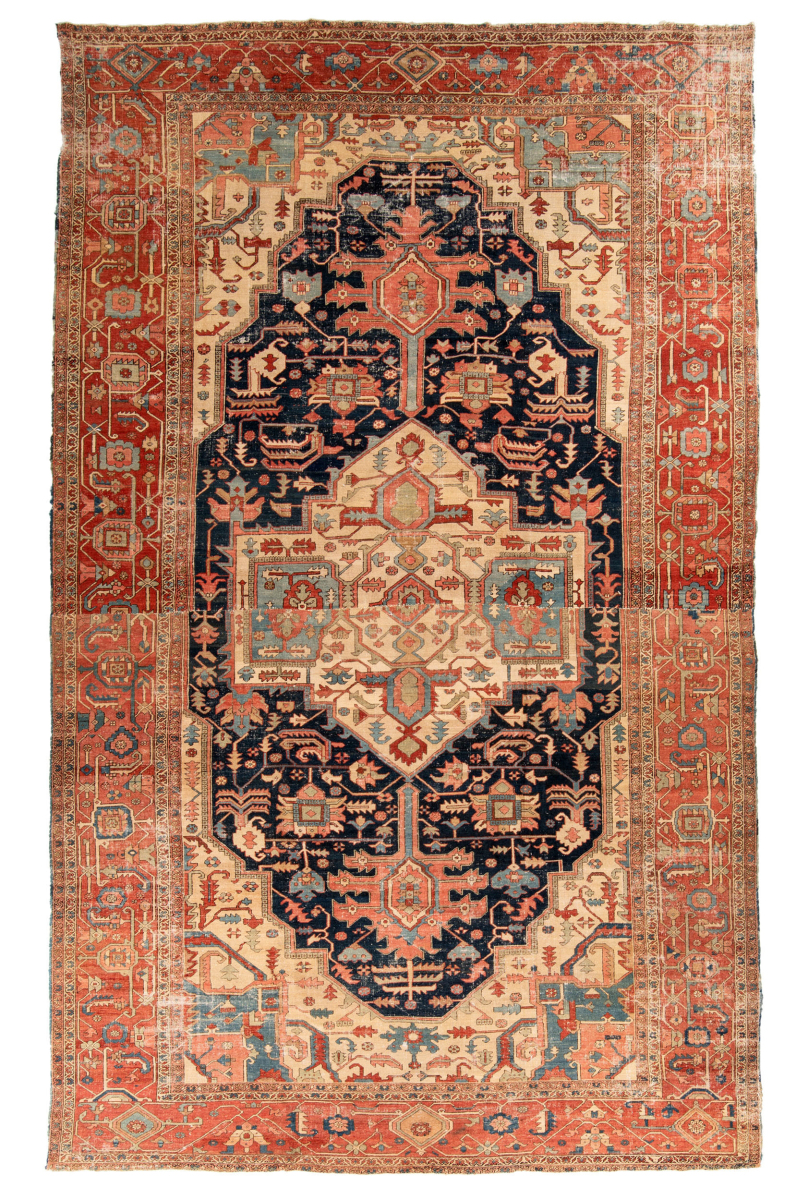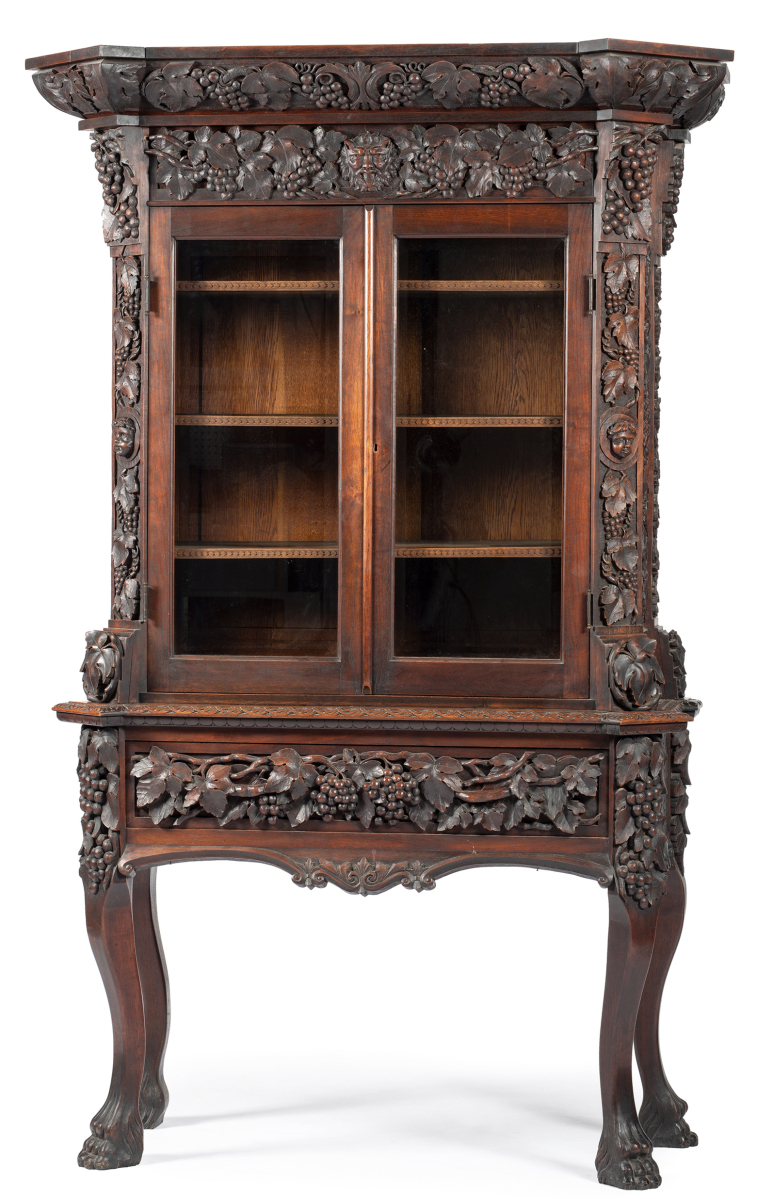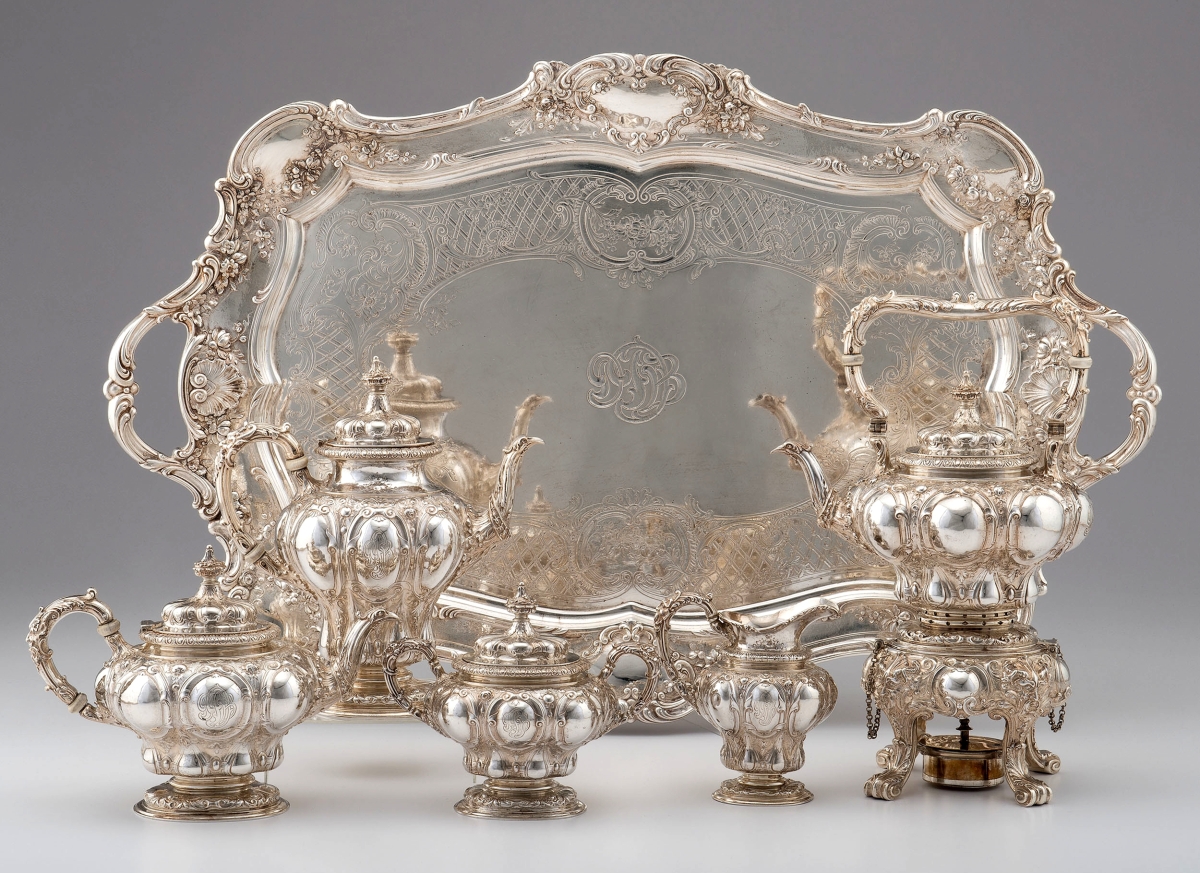
This extraordinary cabinet was carved in the 1860s by Henry and William Fry, hand carved with high relief naturalistic motifs, a real tour-de-force of late-Nineteenth Century Aesthetic Movement furniture, according to Jennifer Howe, a senior specialist in Cowan’s. The top lot of the two days, it sold at $18,750.
Review by Anne Kugielsky
CINCINNATI, OHIO – Sam Cowan said before his company’s June 7-8 fine and decorative art and Americana auction, “While there are several high value lots in the auction, there isn’t one blockbuster item. Personally, I am quite excited about day one. Day one features quality pieces of Americana from the Eighteenth to Twentieth Century with affordable estimates.
“I think there has historically been a lack of interest in antiques with young people because of the incorrect assumption that you need to spend a lot of money to afford something that is old or rare. Day one is just the type of auction that would entice an early collector looking to start or add to their collection. My favorite things in day one range from a nice assortment of fishing decoys [a pair of ladybug fishing decoys sold at $125 and a set of ice fishing decoys caught $156] to a collection of Twentieth Century face jugs [a lot of three Meaders family face jugs sold at $1,188; other lots of face jugs sold above estimate with prices in the hundreds of dollars]. Like I said, things like this appeal to a collector like myself in their 20s/30s. They carry the spirit of folk art and American material culture and they won’t necessarily break the bank.”
The Americana collection of Robert and Barbara Hudson of Lakewood, Col., one of several private collections offered, was split between both days of the auction, with some quality pieces of American furniture featured in day two.
Nick Grote, Cowan’s furniture specialist said about his favorite piece from the Hudson collection, which was a Philadelphia comb back Windsor armchair that sold for $4,375, “My colleagues and I are lucky to have had an opportunity to admire this early form of a Philadelphia comb back Windsor armchair. The delicately turned arm supports, Queen Anne-style stretcher and original paint undeniably set this chair apart from any other examples that I have had the pleasure to study in person.”
The highlight of the auction, according to Cowan before the sale, would undoubtedly be a Cincinnati art carved cabinet by William and Henry Fry. He was proved correct when the 1860s elaborately carved piece exceeded its $8/12,000 estimate to sell at $18,750.

This six-piece Gorham rococo sterling silver tea and coffee service with “extraordinary craftsmanship” realized $11,875.
Jennifer Howe, a senior specialist in Cowan’s fine and decorative arts department and former associate curator of decorative arts at the Cincinnati Art Museum wrote a two-page description for the catalog, “[this] extraordinary cabinet was carved in the 1860s by Henry and William Fry, the founders of the Cincinnati art-carved furniture movement. The cabinet is hand carved with high relief naturalistic motifs, including grapes, grapevines and grape leaves. The Frys likely carved the cabinet for the eminent Longworth family, whose patriarch Nicholas, introduced viticulture to the United States and owned one of the first successful vineyards in the country. It’s a real tour-de-force of late Nineteenth Century Aesthetic Movement furniture.”
Sam Cowan mentioned that day one included lots from the Hudson collection with “affordable estimates.” In fact the top lot of the day was an English, late Seventeenth Century, William and Mary oak side table that had a $200/400 estimate. This scarce example of a gate leg table in oak, standing 28 inches high, was the subject of a flurry of bidding that sent it to $3,375.
The auction featured the usual array of American and English silver, according to Leah Vogelpohl, another senior specialist in the fine and decorative arts department with an interest in silver; she said of several pieces, “the craftsmanship is beautiful.”
A Twentieth Century American, six-piece sterling silver tea and coffee service by Gorham realized $11,875; a circa 1914-16, seven-piece Gorham sterling silver tea and coffee service sold within estimate at $4,375.
Pauline Archambault, senior specialist of fine art, mentioned the auction featured a strong group of noted late Nineteenth-early Twentieth Century American artists, including Antonio Martino, Johann Berthelsen, Walter Baum, Louis Ritter, among others.

ML Poum Malakoul (Thai French, 1910–1973), a Thai pagoda seen through an archway, signed and dated 1960, 18¾ by 15½ inches (sight size), was estimated at $1/2,000 but sold at $8,750.
She also said there were some possible works, not necessarily American, that might surprise; that would include two works by the Thai-French artist ML Poum Malakoul (1910-1973). One oil on canvas features a Thai pagoda seen through an archway and was signed and dated 1960. The 18¾-by-15½-inch (sight size) painting sold at $8,750 – well beyond its $1/2,000 estimate. A second painting by the artist, an oil on wood street scene – again seen through a doorway and dated 1960 and signed – 12¼ by 11¾ inches also sold far above its $800-$1,200 estimate, realizing $6,250.
Another painting that was in the top lots came as no surprise to Archambault; it was Paul Sawyier’s (American, 1865-1917) Kentucky landscape watercolor that sold within estimate at $7,680. An unsigned 27¼-by-19-inch oil on canvas by Adalbert (Bela) Erdelyi (Hungarian Ukrainian, 1891-1955), sold above its $5,000 high estimate at $6,400.
Internet bidding was a factor throughout the auction but nowhere was its impact more significant than with fine art. John Ellsworth Weis (American, 1892-1962), untitled oil on canvas, estimated at $800-$1,200 realized $4,480 from an internet bidder; a Thomas Hart Benton (American, 1889-1975) lithograph, “Edge of Town,” sold above estimate online at $2,875, as did three works by Kentucky artist Patty Thum (1853-1926). All three are oil on canvas still lifes and each had an estimate of $1/1,500; two realized $2,500 and the third, a still life with roses, sold at $3,750.
Rounding out the top lots of the two-day auction were a Read & Watson tall case clock that sold at $7,813; a Victorian Rosewood half tester bed realized $5,625; a Canadian painted cupboard went to $5,313; and a Serapi rug brought $5,120.
Prices, with buyer’s premium, as reported by the auction house. For information, 513-871-1670 or www.cowans.com.






















